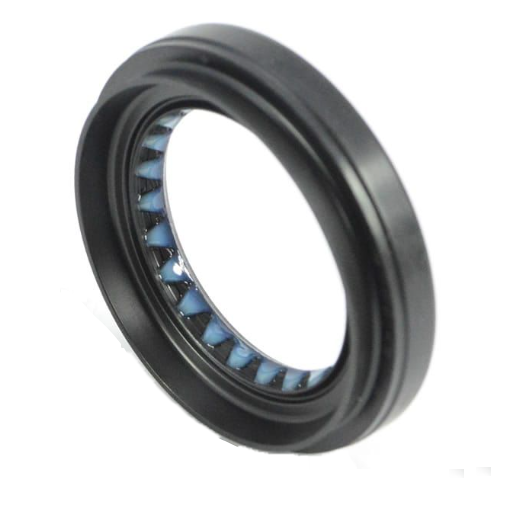automobile oil seal
Understanding Automobile Oil Seals Function, Types, and Maintenance
Automobile oil seals play a vital role in the sealing and functioning of engines and various automotive systems. Often overlooked, these small yet crucial components are essential for maintaining the integrity of the engine and ensuring optimal performance. Understanding the functionality, types, and maintenance of oil seals can help extend the life of your vehicle and prevent costly repairs.
What Are Automobile Oil Seals?
Oil seals, also known as shaft seals, are designed to prevent fluid leakage from various components in an automobile. They are typically made from rubber or other synthetic materials that provide flexibility and durability. The primary function of oil seals is to retain lubricants within the engine and to keep contaminants, such as dirt and dust, from entering sensitive areas.
These seals are often found in critical parts of the automobile, including the engine, transmission, and differential. They play a key role in maintaining pressure within these systems, which is essential for efficient operation. A well-functioning oil seal prevents leaks that can lead to low lubricant levels, resulting in increased friction and wear, ultimately leading to engine failure.
Types of Oil Seals
There are various types of oil seals, each tailored for specific applications within an automobile. Here are the most common types
1. Radial Shaft Seals These are the most commonly used oil seals in automobiles. They consist of a flexible lip that fits tightly against a rotating shaft to prevent oil from leaking.
2. Piston Seals Used in hydraulic applications, these seals are designed to fit around a piston to maintain pressure and prevent fluid leakage.
3. Shaft Seals for Gearboxes Designed to withstand the high shear forces present in gearboxes, these seals are built for durability and long-lasting performance.
4. O-Rings While not traditional oil seals, O-rings are often used in conjunction with oil seals to provide additional sealing capabilities in various automotive systems.
5. Lip Seals These seals feature a lip that creates a dynamic seal against a rotating shaft, ensuring that oils remain contained while preventing external contaminants from entering.
Common Oil Seal Issues
automobile oil seal

Oil seals can wear out over time due to factors such as high temperatures, chemical exposure, and wear from mechanical parts. Common signs of oil seal failure include
- Oil Leaks This is the most obvious sign that an oil seal has failed. You may notice puddles of oil beneath your car or oil residues that indicate a leak.
- Reduced Lubrication If the oil seal fails, you may experience a drop in the lubricant levels, leading to increased friction and potential engine damage.
- Noise A failing oil seal can lead to abnormal noises coming from the engine compartment, often caused by friction or the presence of debris in the lubricating oil.
Maintenance of Oil Seals
Preventive maintenance is key to ensuring the longevity and effectiveness of oil seals. Here are some tips to keep in mind
1. Regular Inspections During routine maintenance, check for signs of oil leaks and address any issues promptly.
2. Use Quality Lubricants High-quality lubricants can help reduce stress on oil seals and prolong their lifespan. Follow the manufacturer's recommendations for oil types and change intervals.
3. Monitor Engine Temperature Excessive heat can accelerate the degradation of oil seals. Ensure the engine cooling system is functioning properly to maintain optimal temperatures.
4. Replace Worn Seals Promptly If you notice any signs of wear or failure, replace the oil seals as soon as possible to prevent further damage to components.
5. Professional Inspections Seek the help of an automotive professional for periodic inspections and to address any issues you may not be able to diagnose.
Conclusion
In summary, automobile oil seals are integral components that ensure the proper functioning of various automotive systems. Understanding their role, recognizing signs of failure, and implementing proper maintenance can help vehicle owners avoid costly repairs and contribute to the longevity of their cars. By paying attention to these small yet mighty components, you can keep your automobile running smoothly and efficiently for years to come.
-
Understanding the Front Main Engine Seal: Purpose, Maintenance, and Installation
News Jul.29,2025
-
Understanding O-Rings and Seal Rings: Types, Applications, and Custom Solutions
News Jul.29,2025
-
Understanding Crankshaft Oil Seals: Rear Seals, Pulley Seals, and Their Role in Engine Integrity
News Jul.29,2025
-
The Importance of Front and Rear Crankshaft Seals in Engine Performance and Oil Management
News Jul.29,2025
-
Crank Oil Seals: Functions, Types, and Cost Considerations in Engine Maintenance
News Jul.29,2025
-
A Comprehensive Guide to O-Rings and Seals: Types, Materials, and Global Applications
News Jul.29,2025
-
Mastering Diesel and Performance Engine Maintenance: A Guide to Critical Oil Gaskets
News Jul.28,2025
Products categories















